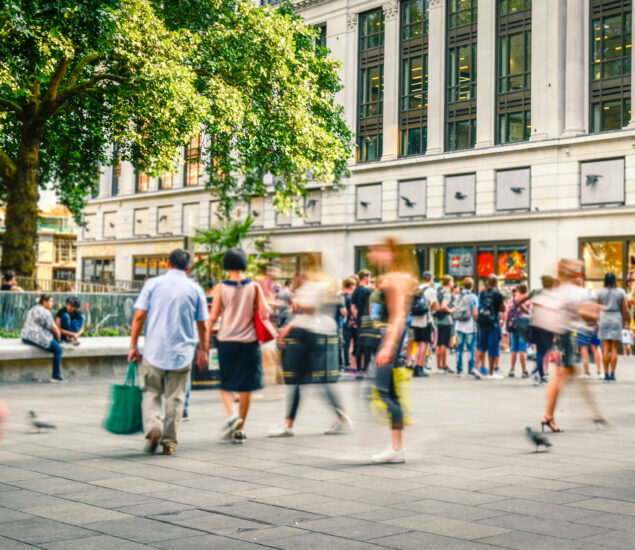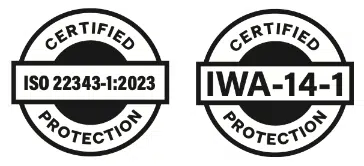The initial tidal wave of security features that defined cities such as New York and London have slowly given way to subtler measures that can blend in with a cityscape. The responsibility of hostile vehicle mitigation (HVM) has fallen onto the lap of many planners, designers, and architects to deliver security solutions that are “human-centric,” scalable, and aesthetically pleasing.
Security measures have a deep history in our cities. Often reactive and often obtrusive, such measures have become cornerstones in shaping our cities’ landscapes. Beginning in the 1990s, London has been a leader in advancing anti-terror security measures in the form of “rings-of-steel.” In the last decade, additional measures, such as crash-rated bollards and steel barriers, have been utilized throughout London, becoming part of everyday city life. Yet as urban designers move towards liveable cities that emphasize inclusivity and accessibility, security measures that impose on this newly prioritised liveability are being questioned. The initial tidal wave of security features that defined cities such as New York and London have slowly given way to subtler measures that can blend in with a cityscape. The responsibility of hostile vehicle mitigation (HVM) has fallen onto the lap of many planners, designers, and architects to deliver security solutions that are “human-centric,” scalable, and aesthetically pleasing.
Yet the implementation of design-based security measures has remained in flux—increasing costs of urban security and the reluctance of urban designers to integrate security into their designs has made it difficult to execute plans for design-led security measures. The choice between security design that is standard and design that is customized to a city is not straightforward. Often, customized design can eat up time and be on the pricier side, while standard designs are quick solutions but don’t always blend into a cityscape. As such, this guide aims to evaluate the benefits and pitfalls of standard and custom security measures.
Time
It is worth considering the time it takes to custom design a security measure versus buying one that has already been designed. If we strictly look at the shortest time it would take to implement a security measure, then a design that is standard seems to be the quickest solution. This is because custom measures need more planning as well as execution. However, this is not always the goal of the landscape architect or urban designer. This is where the difference in reactive and proactive counter-terrorism measures comes into play. Reactive measures are often born out of cities that were unprepared for terror attacks and have to implement security measures as soon as possible. In the aftermath of 9/11, for example, many highly obtrusive security features—notably concrete planters and steel bollards—were scattered around key sites in major cities to stop car bombings. As such, a quick and standard design solution was deemed necessary. On the other hand, proactive measures are measures that are planned out and thought through. In recent years, there has been greater emphasis on the benefits of proactive measures and seem to be the most viable option for cities that want thought-out security solutions. So, although standard design is technically the fastest solution, recent developments in HVM and proactive security planning may suggest that fast solutions are slowly being replaced by long-term custom design.
Aesthetics
The aesthetics of our cities greatly impact the way we interact with our public realms and live our daily lives. Often, security measures that are off-the-shelf are not designed to fit into a city. As such, steel benches and bollards (i.e., design that is standard) may have a negative impact when it comes to the well-being of citizens, tourism, and footfall.
- Well-being
Not only do safety measures matter for a city, but so do citizens’ feelings about their perceived safety. Living amongst bollards and obtrusive security measures is a constant reminder of the looming threat of terror. As such, custom design can offer a feeling of reassurance by blending into a city’s architecture, without the constant reminder that it is protecting citizens against a possible terror attack.
2. Tourism
Tourist sites are an obvious target for hostile vehicles—they are often of great cultural importance and attract people from all around the globe. As vehicle attacks increase, so have the security measures that prevent such attacks—bollards, steel barriers, and concrete blocks have been scattered around public spaces, landmarks, and tourist sites. Unfortunately, many cities across the United Kingdom have come under scrutiny for their quick and often thoughtless reaction to terror threats, scattering noticeable security measures around the country. As Guardian columnist, Simon Jenkins, puts it, “…the balance must be maintained, between personal liberty and what is, in reality, a highly uncommon threat…parts of central London already look cowed and afraid, as ugly barriers go up around tourist sites.” Yet amidst the often hostile security measures the UK has adopted, London has seen some success with customized bollards in the Renaissance London Hotel (a historic Grade I listed London building with a high-level threat profile). In collaboration with ATG Access, the hotel chose to implement bollards with a “bespoke burgundy sleeve design” that was able to successfully blend in with the building’s façade.
3. Footfall
Urban design undoubtedly influences the urban economy, and a simple thing such as designing an area to make it feel more welcoming can boost local business profits. Furthermore, when citizens feel safer, they are more likely to use public spaces. As an extension, shops tend to see more footfall and thus more profits. Put simply, public realms that feel safe and liveable increase footfall, drive higher profits for business and can boost a city’s economy.
Protection
There does not seem to be any real correlation between customized security measures and lower protection. In other words, customizing a bollard does not detract from its ability to stop a vehicle. At Unafor, all of our designs are customizable while adhering to international safety standards. For example, our bollard is offered in rectangular or rounded standard forms and the dimensions of the posts are customizable all while achieving an IWA-14-1 certificate and a V/1500[M1]48/90:0.0 rating.
Cost
Comparing the cost between standard and customized security designs can be a challenge. On the surface, there is a higher cost attached to a customized design compared to one that is standard. This is usually because of the extra time and resources it would involve to create something that would blend into a specific area—it takes time to adjust the size, shape, and colour of a security design. With that said, however, if one buys in bulk, there is not going to be a large price difference between customized and standard designs. In addition, there may even be a higher return on investment when it comes to customized design. As previously underlined, security design that is non-obtrusive could be beneficial to a city’s economy through two main routes: tourism and footfall (i.e., business profits). For example, if one were to invest in a bench or bollard that was standard, it might easily be seen as a security measure and detract from either the tourist attraction or shopping experience. This situation could be avoided with customized design. As such, standard security measures are cheaper on the surface, yet custom designs may boost a city’s economy through tourism and business profits.
Although urban designers and landscape architects are paving the way for custom-designed security measures, progress is slow and obtrusive designs can still be found around the globe. The choice between custom and standard design is not always obvious. While standard designs offer a quick solution to pressing terror threats, customized designs can maintain a city’s beauty while offering safety and comfort to citizens.






